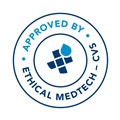
Biography
Biography: Vural Fidan
Abstract
Objectives: Obstructive Sleep Apnea Syndrome (OSAS) is associated with severe complications. Uvulopalatopharyngoplasty (UPPP) is one of several treatment modalities suggested for OSAS. The purpose of this study is to evaluate the effect of UPPP on Nasal Continuous Positive Airway Pressure (CPAP) levels in patients with OSAS. Methods: 20 patients who had been diagnosed with OSAS before UPPP were retrospectively evaluated. All patients had demonstrated compliance on home CPAP therapy, were minimally 6 months post-surgery and had follow-up reports that their CPAP was less effective. We collected data on age, sex, weight, BMI and apnea/hypopnea index (AHI). Optimal CPAP pressure was determined initially through attended in laboratory complex polysomnography. Follow-up CPAP pressure was obtained using an auto-titrating PAP device at home. These data were used to appreciate the pressure alterations that accompanied surgery. Results: The starting CPAP pressures averaged 12±3.5 cm H2O with a range of 8-18 cm H2O. Follow-up CPAP pressures averaged 9.5±2.9 cm H2O with a range of 4-12 cm H2O, representing an overall reduction of 22%. Conclusion: CPAP pressure requirements shift considerably in patients undergoing UPPP. Auto-titrating PAP devices have commit for facilitating the management of CPAP therapy during this time. Consideration should also be given to the use of auto titrating PAP units as the treatment of choice in these subjects.

